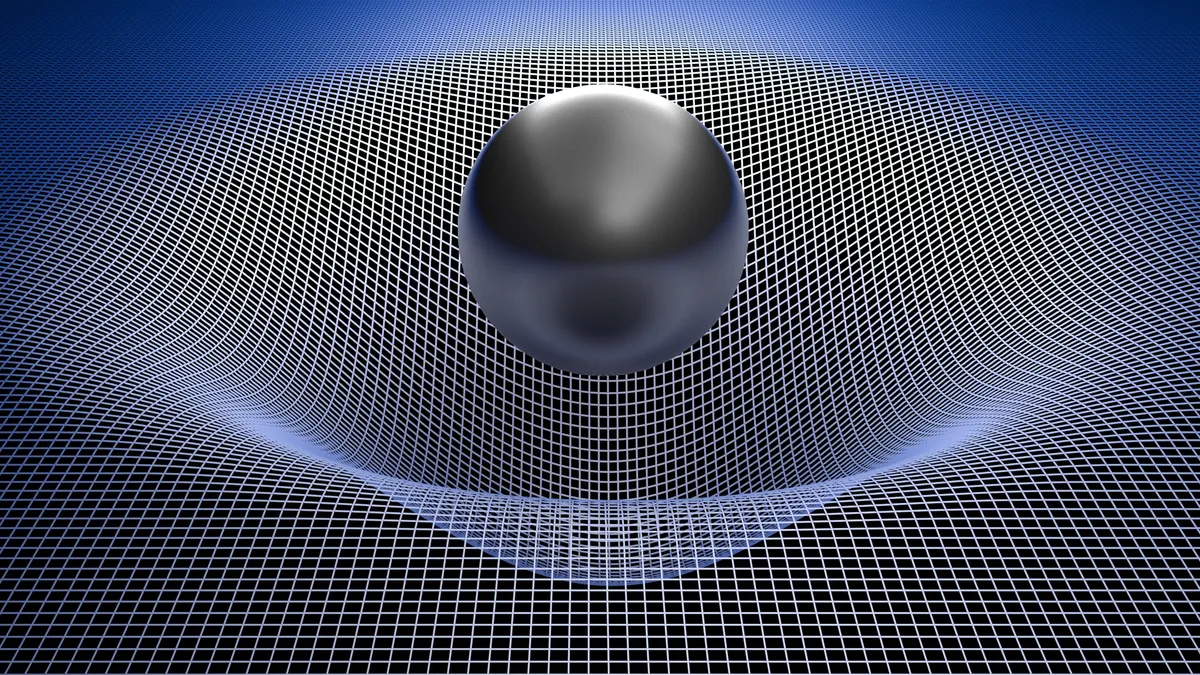Before we begin, let's start with a little riddle, shall we?
"Everyone is attracted to me, and everybody falls for me. What am I?"
Since you've clicked on the heading of this article, you'll probably have already worked out that the answer is, in fact, gravity. But, do you actually know what it is?
Let's address some of the most common questions that center (pun intended) around the subject of one of the most intriguing phenomena in the galaxy.
What is gravity?
Gravity is one of the fundamental forces of nature. It is something you experience every single day, but likely something you never really give a second thought.
But, it turns out, while we are all intimately familiar with it, and it is one of the most widely studied things in nature, we only really have a surface-level understanding of it.
According to this NASA site, gravity can be defined as, "the force by which a planet or other body draws objects toward its center. The force of gravity keeps all planets in orbit around the sun." Another way of describing gravity is as "the force that attracts a body towards the center of the earth, or towards any other physical body having mass."
Objects with larger mass exert a greater gravitational pull, and this force becomes weaker the further you are from a center of mass. However, despite the way that gravity acts on large objects, it is actually the weakest known force. While gravity can explain the movement of objects at the level of the solar system and elsewhere in the universe, on the quantum level everything we think we know about it completely breaks down.
This has led some to even postulate that gravity might not actually be a real force, in the Newtonian sense, but more of an effect. Einstein proposed that gravity, rather than being an actual fundamental force, is a curvature of time and space caused by mass and energy and that gravity and acceleration are essentially one and the same.
According to his theories, gravity is better explained by the bending or distortion of space-time around objects in space. In fact, satellite data has shown that rotating bodies in space twist the fabric of space around themselves, affecting the motion of gyroscopes.
Fascinating.
The force of gravity on Earth and how it affects us
Being a relatively massive object, the Earth also exerts a gravitational effect on space around it, and, of course, on its surface. While far larger objects like the Sun have a much larger influence on gravity, for smaller stuff like you and I, the effects of gravity are very influential indeed.
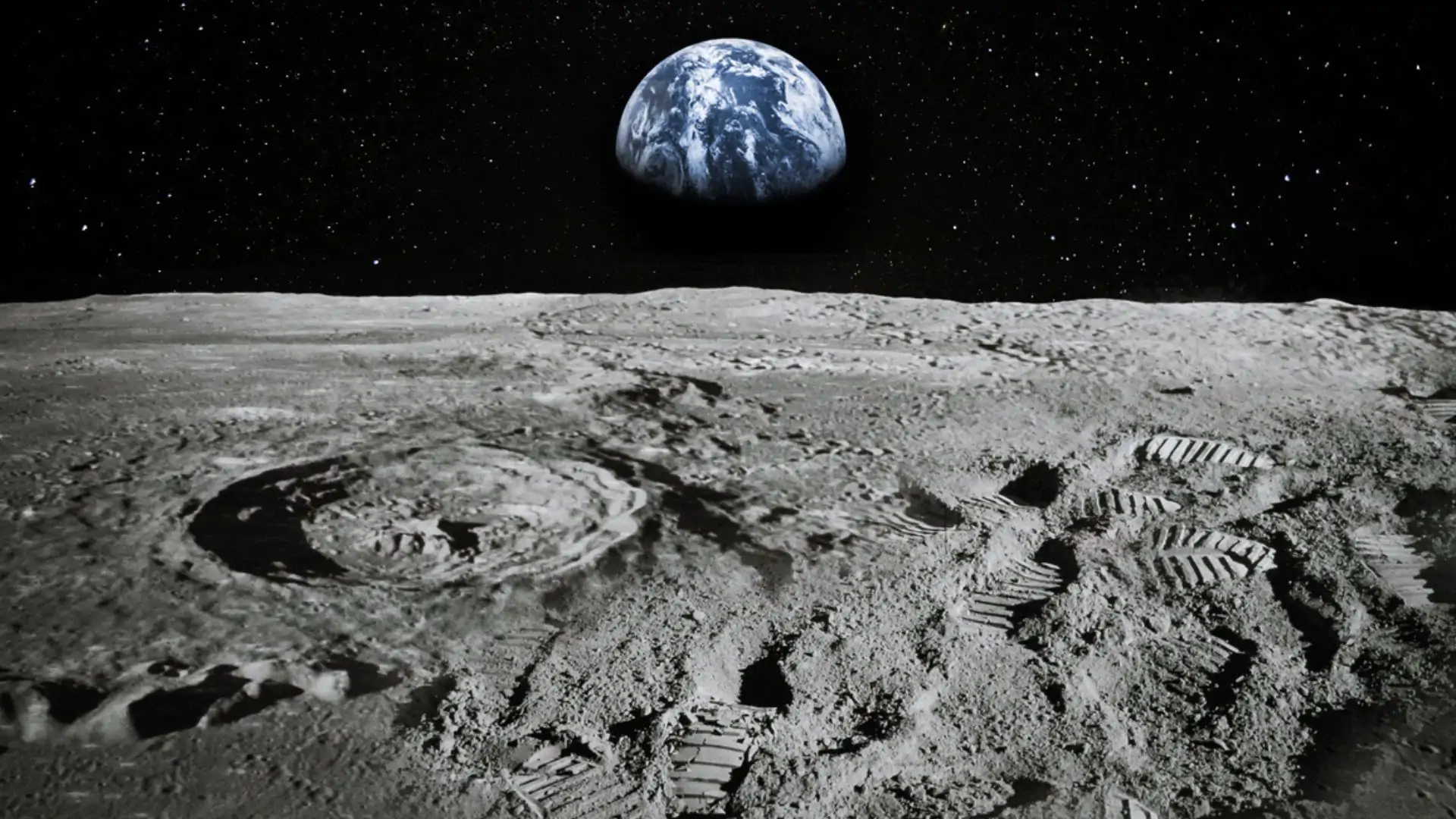
And thank goodness it is, else we'd be sent flying off into the void of space, or die of asphyxiation as Earth's atmosphere would completely disappear.
The force of gravity acting on an object on Earth is what determines the weight of the object.
Gravity is not only important for keeping you and everything you need to be tied to the ground, its effects over time have also determined our body shapes. Pretty much everything about the human body is a direct consequence of evolving over millions of years under the constant downward pull towards the Earth's core.
The effect of gravity on our bodies is so important, in fact, that astronauts must go to great lengths to try and maintain muscle and bone density if they ever spend extended periods of time in orbit.
But why?
On Earth, we experience the effect of gravity as "weight". Weight is the effect of gravity on a body. Rather than being fixed, it will vary widely depending on the effect of gravity, for example, which planet or celestial body you stand on. On the Moon, for example, your weight will be around six times less than on Earth.
On planets like, say, Jupiter, however, you can expect your weight to balloon to something like 2.4 times that here on Earth.
As a quick aside, it is important to make the distinction between an object's mass (a fixed quantity) and its weight (a variable quantity). But, even on a very large body like Earth, even the force of gravity is not, technically speaking, constant either.

This is a combination of the Earth not being a perfect sphere, but also a product of its highly variable topography on its surface. This is primarily a consequence of the changing distance, albeit slight, between the Earth's center of mass and a point on the Earth's surface.
If you are on top of the tallest mountain, for example, you will weigh a few grams less than at sea level (not that you'd actually notice). This phenomenon is also affected, again ever so slightly, by the composition of the Earth directly below your feet.
Different rock types, concentrations of minerals, and geography all collude to create pockets of varying average density all over the place. This directly affects gravity at different places on the Earth's surface. Although you would need sensitive instruments to measure this and would not notice it in everyday life. The Earth's gravity field also changes from one month to the next due to the mass of water moving around on the surface.
NASA has actually mapped these effects from space using a pair of satellites that work in tandem to measure the relative pull of the Earth's gravity as they travel around the planet.
Called the GRACE satellites, NASA was able to produce an interesting "bumpy" model of Earth's gravity.
And here it is in all its glory.
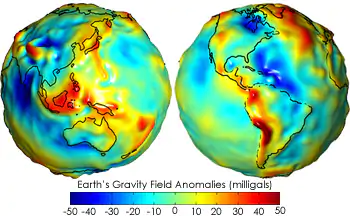
But, for all its apparent importance for us and the Universe, gravity is actually a fairly weak force, all things considered. After all, even the smallest animal on Earth is able to move against it with relative ease, run, jump, or fly around, and pick stuff up and throw it into the air.
While everything that goes up, must indeed come back down, it doesn't take that much to temporarily defy gravity ever so slightly. We can even propel stuff into space against the force of gravity using, admittedly, a considerably larger amount of effort in the form of massive, barely controlled explosions in the form of rockets.
How much is the force of gravity?
On Earth, the force of gravity is measured as the acceleration imparted by the Earth to objects on or near its surface. This acceleration is measured in meters per second squared. The average value for this is 32.1740 ft/s2 or 9.80665 m/s2. This means that, if we ignore the effects of air resistance, "the speed of an object falling freely near the Earth's surface will increase by about 9.81 meters (32.2 ft) per second every second."
In this case, the unit m/s? is mathematically equivalent to N/kg. In other words, an object that is standing still will have a weight of 9.8 N/kg or 9.8 Newtons for every kilogram of its mass.
When you are standing on the surface of the Earth, you experience this "acceleration" as your weight.
If you were not on the ground, but are falling from a height under the force of gravity only (e.g. without wind resistance), you would be in free-fall and accelerate at 9.8 m/s2 until you reached the ground. Your acceleration can be calculated using Newton’s Second Law, F = ma (force equals mass times acceleration, in Newtons per kg).
What's more, gravity acts on any object with mass. This includes everyday objects like you and a friend, cars, balls, and cars, the force of gravity between any two of these objects is also exerted, but it is so tiny that it is effectively negligible, although it can be measured.
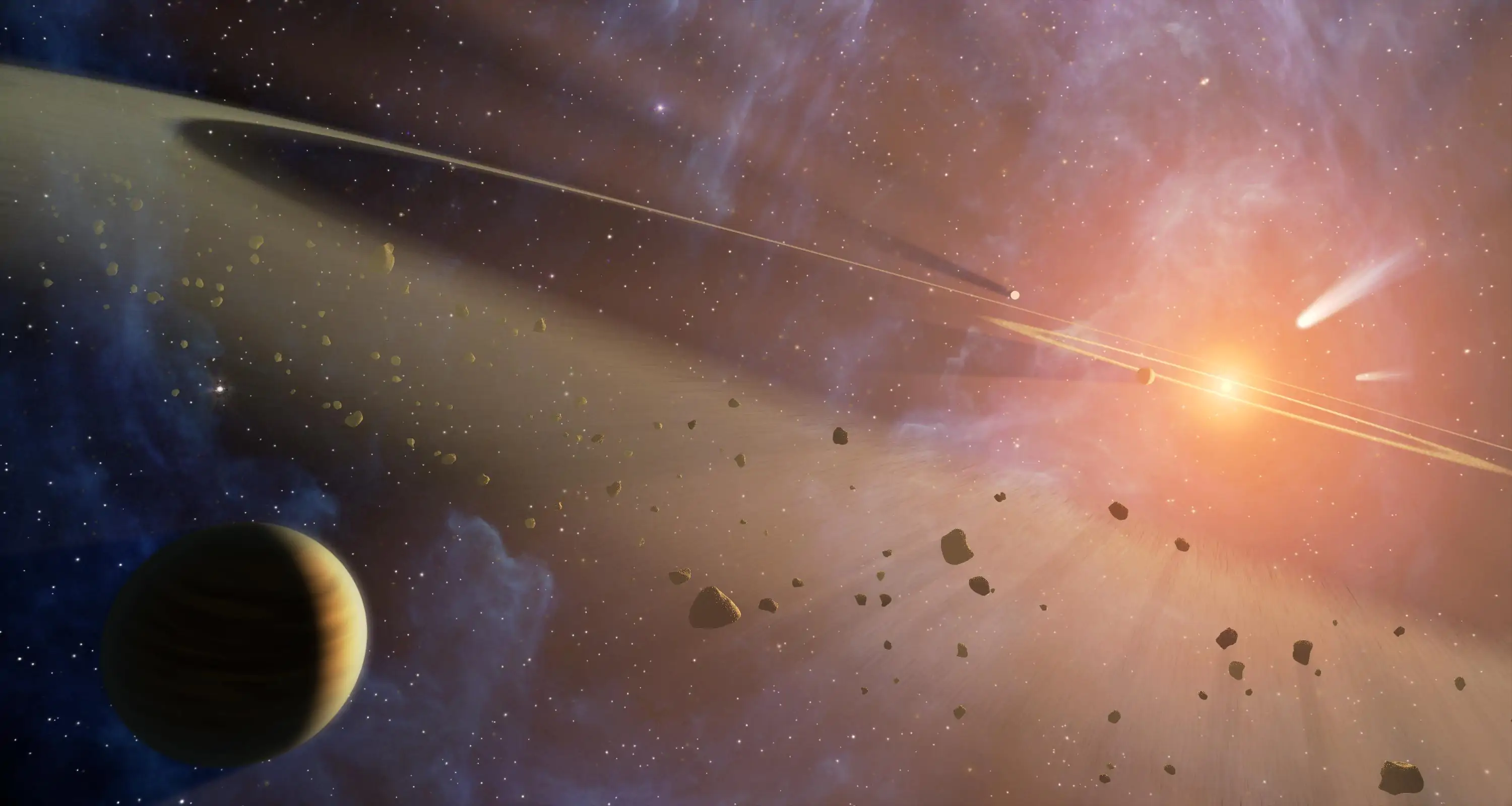
The gravitational constant (G) in Newton's law of gravitation is the proportionality constant which relates the force of gravity to the masses and distance between two bodies. It has a value of 6.67 ? 10?11 N m2 kg?2. That is a very small number. A 10-ton (10,000 kg) truck one meter away would generate only around 0.00667% of Earth's surface gravity.
Interesting.
Is Earth's gravity weakening?
As we have already touched upon above, gravity should not be thought of as something of a constant. On Earth, it varies across the Earth's surface and also weakens proportionally with distance from the center of the Earth's mass.
But, interestingly, measurements of the gravitational constant G are actually not consistent over time, as it is very difficult to measure accurately. In fact, the official value of 6.67 ? 10?11 N m2 kg?2 is actually an average. However, in 2013, a group of scientists at the International Bureau of Weights and Measures and the University of Birmingham, measured G using two methods. The resulting value was 240 parts per million bigger than the official one, set in 2010.
Although this may not seem that strange - the measurement of G is constantly changing, after all, but it was just 21 ppm off the value the same team got, using the exact same methods, in 2001, leading researchers to conclude that the difference was not due to random experimental errors. The results might point to evidence that gravity itself is not constant.
While most researchers believe the results are most likely due to error (or that the team has actually found the correct value for G), it could also be evidence of a fifth, hypothetical fundamental force, which causes the strength of gravity to oscillate.
The moon's gravity also has an effect on Earth, causing the tides, this effect is weakening over time because the Moon is gradually moving away from Earth. Believe it or not, the rate is such that it has been estimated that the Moon will stop orbiting Earth in around 15 billion years.
This might sound troubling, but remember that our Sun is scheduled to expand and engulf our planet long before that. Don't worry, our species will either be completely extinct by then (sorry that doesn't help, does it?).
Although this is not actually weakening the earth's gravity, the Moon is moving away from us.
This phenomenon is actually the consequence of the interaction of the Moon with the large bodies of water on Earth. The tidal bulge formed by the interaction of the Moon's gravity and this mass of water actually forms slightly ahead of the Moon, feeding a small amount of energy into the Moon. This, in turn, increases its velocity, giving it more energy to move into a slightly higher orbit.
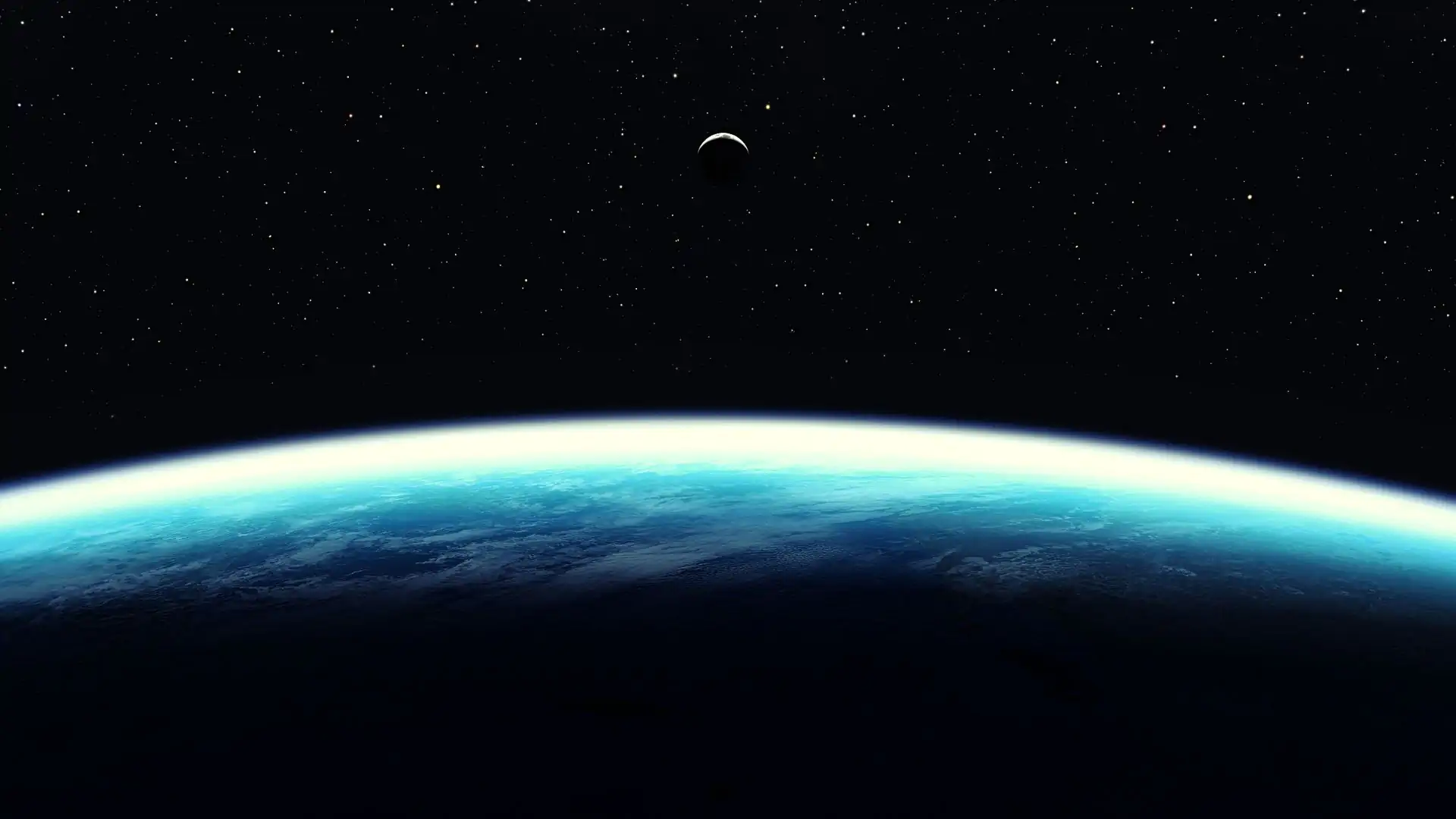
The friction caused by this also, as it turns out, slightly slows down the rotation of the Earth by a tiny amount too. The effect is tiny, but over time it builds up significantly.
How do you calculate the force of gravity?
As we've already mentioned earlier, mass is considered a measure of inertia, and weight is the force exerted on an object in a gravitational field. Gravity is slightly stronger over places with more mass than in areas with less mass, such as vast water bodies like oceans and seas.
Sir Isaac Newton explained the Law of Universal Gravitation, stating that gravity occurs as an equilibrium between two bodies. You can work out this equilibrium mathematically. The force of attraction is directly proportional to the product of their masses and inversely proportional to the square of the distance between them.
But, what does this mean? Let's see it worked in mathematical equations to help us understand the concept a little easier (hopefully).
The basic equation for calculating the force of gravity is given by: -
F = G(m1m2 ) / r2
Where: -
F = Force
G = The gravitational constant
m1 = Mass of the first object
m2 = Mass of the second object
r2 = The square of the distance between the objects
The gravitational constant, as we saw above, is a proportionality constant that is an empirical value derived from a series of experiments and observations. It was first introduced by Newton but has appeared in the works of many later physicists including Albert Einstein.
This was first published as part of Newton's work on classical mechanics and is called Newton's Universal law of gravitation.

This equation gives us a good estimate of the level of "attraction" between two masses over a distance and holds for any mass or the distance between them. For us, this would be "felt" as weight on Earth.
All good, but on the surface of the Earth, weight, and mass are related by the acceleration due to gravity.
You can use Newton's law of gravitation to get the acceleration due to gravity (g-value, in physics) on the surface of the Earth just by knowing the gravitational constant G, the radius of the Earth, re, and the mass of the Earth. Therefore, take, for example, an object with mass, m. You can calculate its force as follows;
F = m1g
This force is provided by gravity between the object in question, say our body, and the Earth, as per Newton's gravity formula. We can, therefore, amend the first equation quoted as follows: -
m1g = G(m1m2 ) / r2e
Where: -
m1g = acceleration of gravity
G = The gravitational constant
m1 = Mass of the first object
m2 = Mass of the second object
r2e = Is the radius of the Earth
Great, now let's plug in some figures, shall we? We know that the radius of the Earth (re above), is about 6.38 ? 106 meters, and the mass of the Earth is 5.98 ? 1024 kilograms. We also know that the gravitational constant is 6.67 x 10-11 N.
So,
m1g = (6.67x10-11 N.m2/kg2) m1(5.98x1024kg) / (6.38x106m)2
That's looking pretty complicated, but we can simplify by dividing both sides of the equation by m1 to give us: -
g = (6.67x10-11 N.m2/kg2) m1(5.98x1024kg) / (6.38x106m)2
Which works out to be (rounded up), drum roll please...
g = 9.8 m/s2
So, thank's to Newton’s law of gravitation, we can work out that the acceleration due to gravity near the surface of the Earth is 9.8 meters/second2. If you doubt this figure, you could also try to prove it experimentally by letting something heavy drop from a known height and time its descent.
That sounds like a challenge.
Does the force of gravity change on Earth?
We've touched on this above, but for thoroughness, let's see how, and why, this is, in fact, the case.
Gravity, as we've seen, is influenced by how much mass a particular object has. This directly impacts the strength of gravitational pull between it and another mass. Earth's mass comprises various physical features - such as mountain ranges, oceans, and deep-sea trenches. All these features have different mass, which results in an uneven gravity field at different places around the world.
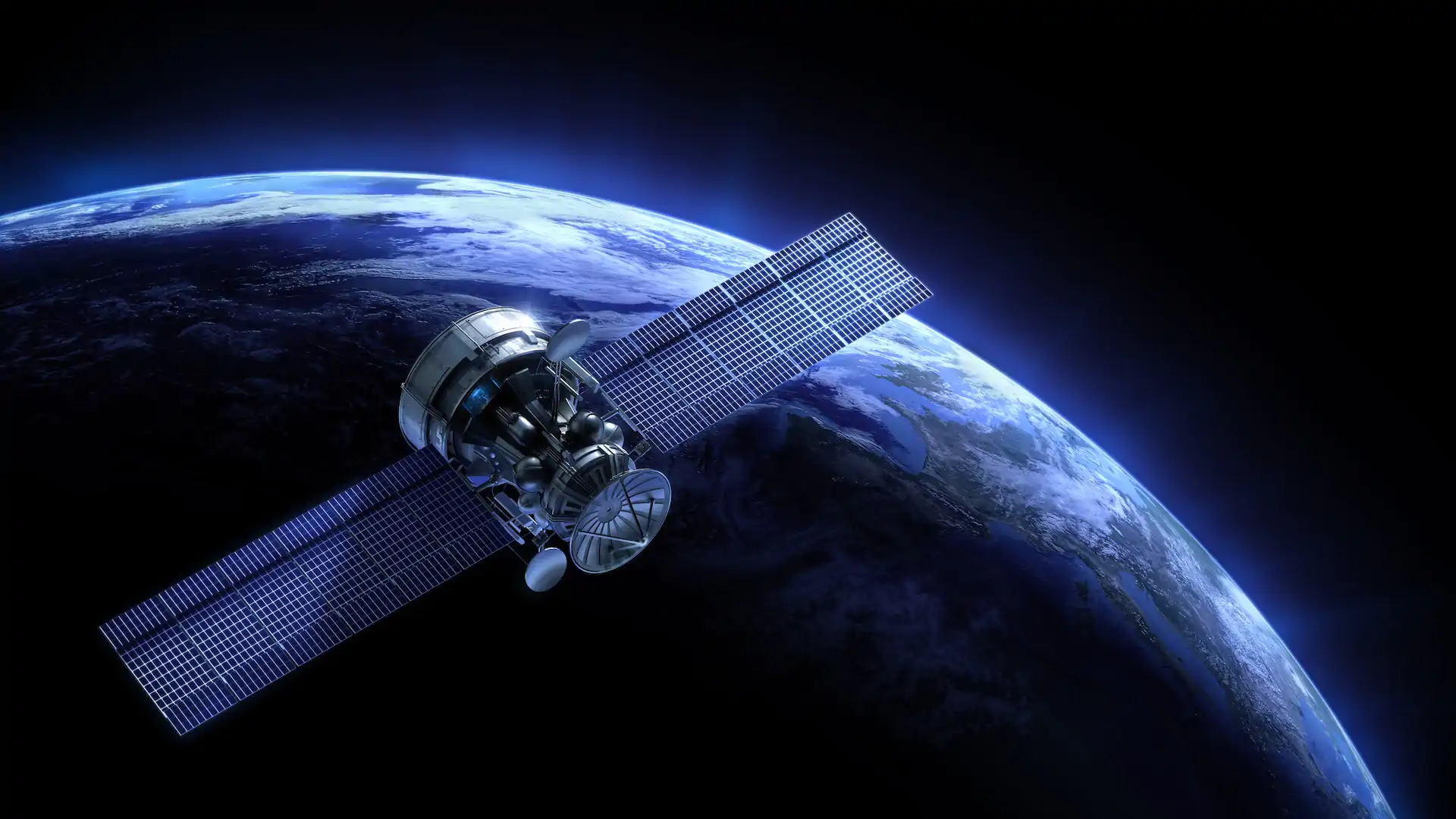
Scientists at NASA have demonstrated that the Earth's gravity field changes from one month to the next primarily due to the mass of water moving around on the surface. Water in all its forms has mass and weight; so you can weigh the ocean moving around. You can also weigh rainfall and changes in the polar ice caps.
In addition, the force of gravity on Earth changes depending on where you're standing on it. This means that, amazingly, the gravity on Earth at the equator is 9.789 m/s2, while the force of gravity at the poles is 9.832 m/s2.
What this means is that, in effect, you will weigh ever so slightly more at the poles than at the equator. Considering the Earth is not a perfect sphere but rather is slightly squashed, this should come as no surprise. In other words, you are closer to the center of Earth's mass at the poles.
Gravity also decreases with height above sea level, since you're further away from the Earth's center. The decrease in force from climbing to the top of Mount Everest is about 0.28% less than at sea level, but if you have moved as far away as the International Space Station (ISS), you will experience 90% of the force of gravity you'd feel the surface.
Amazing.
How does gravity affect us?
In short, in many, many ways. So many in fact, it would probably be easier (and quicker) to list ways it doesn't.
But, have you ever wondered how your coffee stays in your cup or how your car remains on the ground? How about why the rain hits the ground, water flows downhill, or why you return to the ground after jumping? Well, as you've probably guessed, this is all "thanks" to gravity.
To do anything in life, like lifting a suitcase onto a rack above your head, you need to use energy to work against gravity. Even walking, something we take for granted, requires constant effort (albeit subconsciously) on your part to prevent gravity from pulling you to the ground.
Your entire existence and everything you "know" about the world and the universe is, in part, formed by the existence of gravity. But, while gravity can seem an annoyance at times (especially when maneuvering heavy loads or having to get up with an injured back), you need to remember that you probably would not exist without it.
Why do we need gravity?
Gravity is a powerful and fundamental force that influences practically everything in the universe. Because all things in space exert gravitational pulls on other objects in space, gravity is in charge of directing the paths that everything in the universe follows. This force, which may be thought of as glue, keeps galaxies together.
As noted earlier, gravity ensures that planets remain in their respective orbits. As a result of gravity, human-made satellites may be able to travel to and from the Moon. Furthermore, gravity traps liquids and gases in the atmosphere to make a planet habitable.
All good stuff, but there are other important ways that gravity affects our lives, more specifically our bodies, and everything on a more day-to-day basis.
Here are but a few.
1. Gravity affects your muscles in some interesting ways

Despite not being able to "see" gravity, it has an effect on how strong muscles and bones need to be. For example, in zero-G, muscles become weaker because very little muscle contraction is needed to support their bodies or move around.
In space, some muscles can lose around 20 percent of their mass without sufficient exercise. Muscle mass can disappear at a rate as high as 5% a week.
And it is not just your muscles that are affected. If you were to be in space long enough, you'd soon find that your bones would also begin to waste away. Bones lose density because they no longer have to support the body against gravity. Bones in space atrophy at a rate of about 1% a month, and total loss could reach 40 to 60 percent. Loss of bone mass is a very serious potential health risk for astronauts that needs careful monitoring and mitigation.
After all, they do, at some point, need to return to Terra Firma. Once back under the full influence of Earth's gravity, astronauts can struggle to carry out basic tasks like walking, etc, and require a prolonged period of rehabilitation.
And you thought being an astronaut was a dream come true?
2. Blood pressure is, in part, controlled by gravity

According to NASA, when you are standing on Earth, the blood pressure in your feet can be around 200 mmHg (millimeters of mercury) while it is 60-80 mmHg in your brain.
In space, where the pull of gravity approaches near-zero, the head-to-toe gradient ceases to exist. Blood pressure equalizes and becomes about 100 mmHg throughout your body.
This can prove to be very problematic over long periods of time, resulting in some unique zero-g-related health problems. Under such unusual circumstances, parts of your brain assume there is a problem, as the blood pressure is too high in the brain.
To prevent any prolonged damage to the body, this stimulates your body to produce more urine, in an attempt to remove "excess" fluid from the body. This can lead to astronauts losing around 20% of blood volume over a matter of days, potentially leading to heart disease and other health issues.
That's why astronauts can look odd after a journey to the Moon or other planets: their faces, filled with fluid, puff up, and their legs thin out because legs can lose at least one liter of body fluid while in space.
Being an astronaut, it seems, is not exactly for the faint-hearted (pun intended).
3. Tides and water levels depend on gravity

The gravitational pull between the Earth and the Moon is strongest on the side of the Earth facing the Moon, as you probably know. This attraction causes the water on this "near side" of Earth to be pulled toward the Moon. This pull alters the water levels.
As gravitational force draws the water closer to the Moon, inertia attempts to keep the water in place. But the gravitational force exceeds it, and the water is pulled toward the Moon, causing a "bulge" called a tide to form.
Many aspects of our lives, and of the natural world, rely heavily on this period of rising and falling of water around the world. Without it, life on this planet would look very different indeed.
4. The air we breathe and the atmosphere wouldn't exist without gravity
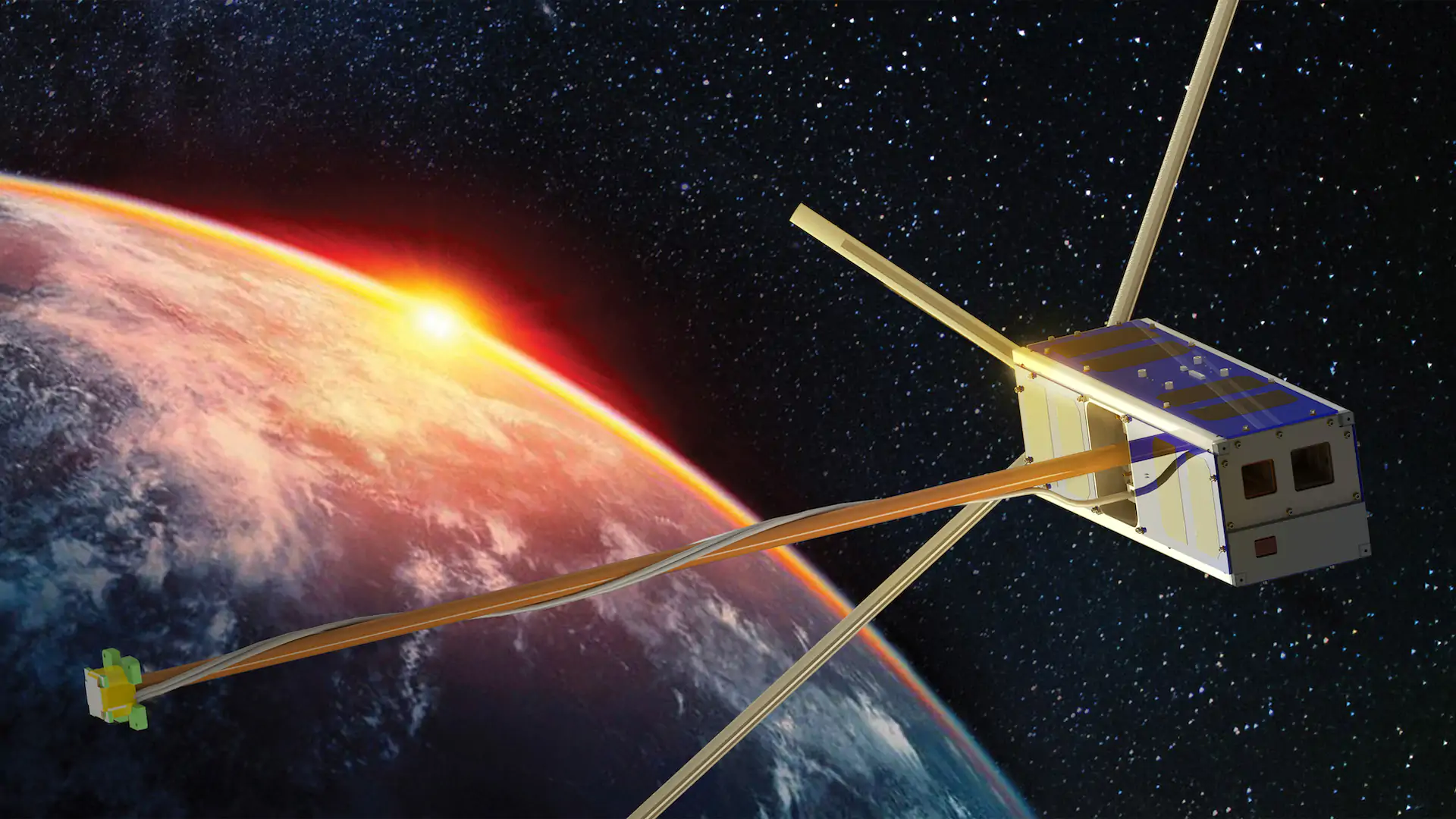
As we've previously mentioned, gravity keeps the blanket of air on the Earth's surface. It also sets up what physicists call a density gradient throughout the column of air covering our world.
The volume of air higher in the sky compresses the air nearer to the ground. This causes the air near the bottom to be denser and at a more significant pressure than air at higher elevations.
This should be fairly obvious, but this natural process is important for many aspects of the Earth's systems. Weather, for example, is dramatically controlled by this sort of thing.
5. Gravity helps boost immunity
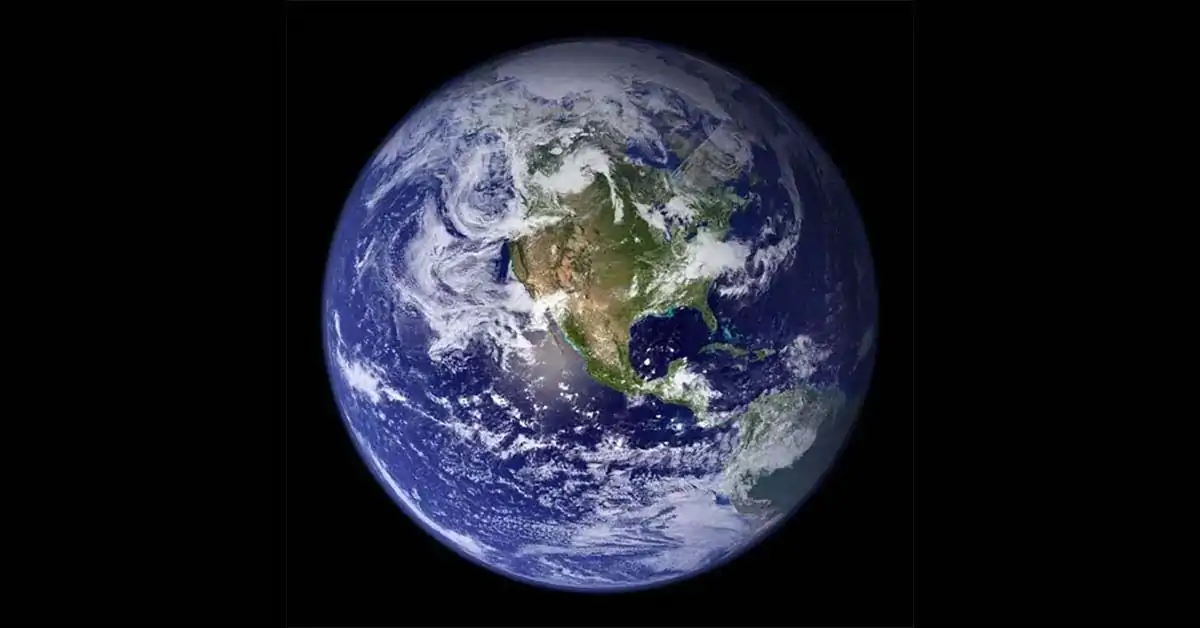
Yet another important aspect of gravity is its influence on your immune system, or rather, how your body has evolved to operate under its influence on Earth. When gravity is much weaker than we are used to, it can have serious implications for your immune system.
This was first noticed during the Apollo 13 mission where an opportunistic bacteria, Pseudomonas aeruginosa, managed to infect astronaut Fred Haise. On Earth, this bacteria is only really a threat to immunocompromised individuals, but in zero-G, even the healthiest of individuals appear to suffer from a weakened immune system,
The reason for this appears to do with how one critical component of your immune system, the T-cells, depends on gravity to function properly. These specialized immune cells are responsible for fighting a range of diseases, from the common cold to deadly sepsis, and so, any effect on their functionality is a little worrying.
Well, only if you plan on spending extended periods of time in space.
And so, as you can see, gravity is vital for many aspects of life on our planet and the wider cosmos. It does its part to keep you alive, while also enabling the Earth to orbit the Sun while maintaining its own private satellite (the Moon) too.
It also helps maintain control over our surroundings and the air we breathe while also holding the very stuff our planet is made of together in one handy package. For all the inconveniences it does cause us, like picking stuff up or not being able to jump over skyscrapers with ease, life as we know it would be almost impossible without the presence of good old gravity.

